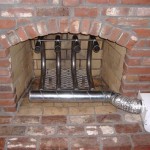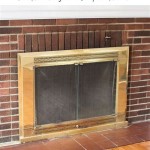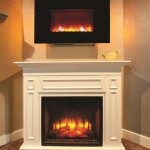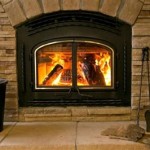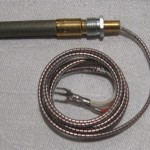Best Energy-Efficient Gas Fireplaces: A Comprehensive Guide
Gas fireplaces offer a convenient and aesthetically pleasing alternative to traditional wood-burning fireplaces. They provide instant warmth, require minimal maintenance compared to wood-burning models, and can be easily controlled. However, energy efficiency is a crucial factor to consider when selecting a gas fireplace, as models vary significantly in their heating performance and gas consumption. This article explores the key aspects of energy-efficient gas fireplaces, offering a detailed overview of features, technologies, and considerations to help homeowners make informed decisions.
Understanding the energy efficiency of a gas fireplace involves several factors beyond just the advertised BTU (British Thermal Unit) rating. While BTU indicates the amount of heat produced, it doesn't fully reflect how efficiently the fireplace converts gas into usable warmth. Factors such as fireplace design, venting type, control features, and the quality of construction all play a significant role in determining overall energy efficiency. This article will delve into each of these aspects to provide a comprehensive understanding of what constitutes an energy-efficient gas fireplace.
Key Factors Influencing Energy Efficiency
Several factors contribute to the energy efficiency of a gas fireplace, and understanding these factors is crucial for selecting a model that meets a homeowner's heating needs while minimizing gas consumption. The efficiency of a gas fireplace is not only about saving money on energy bills but also about minimizing environmental impact. This section details the most important factors influencing gas fireplace efficiency.
The first and most significant factor is the
venting system
. Gas fireplaces are typically categorized into three main venting types: direct vent, B-vent (natural vent), and vent-free. Each type has different efficiency characteristics. Direct vent fireplaces are generally considered the most energy-efficient. They draw combustion air from outside the home and vent exhaust gases directly outside through a sealed system. This prevents the loss of heated indoor air and eliminates drafts, resulting in higher heating efficiency. B-vent fireplaces, also known as natural vent fireplaces, utilize the existing chimney. While less expensive to install, they are typically less efficient than direct vent models because they draw combustion air from the room, leading to heat loss up the chimney and potentially creating drafts. Vent-free fireplaces, as the name suggests, do not require any venting. They burn gas very cleanly, releasing combustion products directly into the room. While offering convenience, they are subject to stringent safety regulations related to indoor air quality and are not permitted in all jurisdictions. Moreover, vent-free fireplaces, while potentially offering near 100% "thermal efficiency" because all heat stays in the room, can lead to moisture build-up and may not be suitable for all homes, especially those that are already tightly sealed. Therefore, the choice of venting system significantly impacts the overall energy efficiency of a gas fireplace.Another crucial factor is the
fireplace design and construction
. The design of the firebox, the materials used, and the insulation all contribute to how effectively the fireplace radiates heat into the room. Fireboxes constructed from high-quality materials, such as cast iron or heavy-gauge steel, tend to retain heat longer and distribute it more evenly. Effective insulation around the firebox prevents heat loss to the surrounding walls and minimizes heat transfer to other areas of the home. Advanced designs also incorporate features like blowers, which circulate heated air throughout the room more efficiently, enhancing overall heating performance. The attention to detail in the design and construction of a gas fireplace directly correlates to its ability to deliver comfortable and efficient heating.Finally,
control features and technologies
play a vital role in maximizing energy efficiency. Many modern gas fireplaces are equipped with electronic ignition systems, which eliminate the need for a standing pilot light. A standing pilot light constantly consumes gas, even when the fireplace is not in use. Electronic ignition systems, on the other hand, only ignite the gas when heat is required, significantly reducing gas consumption. Thermostat controls allow homeowners to set a desired room temperature, and the fireplace automatically adjusts its flame height to maintain that temperature. Some models also offer programmable timers, enabling users to schedule heating periods according to their needs, further optimizing energy efficiency. Smart home integration allows for remote control and monitoring of the fireplace, providing even greater control over energy usage. Therefore, incorporating advanced control features and smart technologies is essential for energy-efficient operation.Types of Energy-Efficient Gas Fireplaces
The market offers a variety of gas fireplaces, each with its own set of features and energy efficiency characteristics. Understanding the different types available helps homeowners choose the model that best suits their specific heating needs and preferences. We will explore three primary types based on their venting systems and general design.
Direct Vent Gas Fireplaces:
These fireplaces represent the pinnacle of energy efficiency in gas fireplaces. They operate on a closed combustion system, drawing air from outside for combustion and expelling exhaust gases directly outside through a dedicated venting system. This sealed system prevents any exchange of air between the indoor and outdoor environments, thereby preventing heat loss and drafts. Direct vent fireplaces are known for their high heating efficiency, often exceeding 70% or even 80% Annual Fuel Utilization Efficiency (AFUE). They are available in a wide range of styles, from traditional log sets to contemporary linear designs, offering homeowners both efficiency and aesthetic appeal. The initial cost of a direct vent fireplace, including installation of the venting system, may be higher than other types, but the long-term energy savings often offset the initial investment. Moreover, direct vent fireplaces offer superior safety, as the sealed combustion system minimizes the risk of carbon monoxide leaks into the home. The combustion is very controlled and isolated from the living area.B-Vent (Natural Vent) Gas Fireplaces:
B-vent fireplaces utilize an existing chimney to vent exhaust gases. They are a popular choice for homeowners who want to replace an existing wood-burning fireplace with a gas model without the expense of installing a new venting system. However, B-vent fireplaces are generally less energy-efficient than direct vent models. They draw combustion air from the room, which can lead to heat loss up the chimney and potentially create drafts. The AFUE of B-vent fireplaces typically ranges from 50% to 65%. While they may be more affordable to install than direct vent models, they result in higher gas consumption and lower overall energy efficiency. B-vent fireplaces are a viable option for homeowners who prioritize affordability and ease of installation, but they should be aware of the reduced energy efficiency compared to direct vent alternatives.Vent-Free (Ventless) Gas Fireplaces:
Vent-free fireplaces do not require any venting, offering maximum installation flexibility. They burn gas very cleanly, releasing combustion products directly into the room. While this simplifies installation and eliminates the need for a chimney, it also raises concerns about indoor air quality. Vent-free fireplaces are subject to strict safety regulations and are not permitted in all jurisdictions. They must be equipped with oxygen depletion sensors (ODS) that automatically shut off the gas supply if oxygen levels in the room drop below a safe threshold. While vent-free fireplaces may offer near 100% thermal efficiency, they can contribute to moisture buildup and potential air quality issues, making them unsuitable for all homes. Whether a vent-free fireplace is suitable for a particular residence will depend on the home's ventilation characteristics and local regulations. It is advisable to consult with a qualified HVAC professional before installing a vent-free fireplace.Tips for Maximizing Energy Efficiency
Regardless of the type of gas fireplace chosen, there are several steps homeowners can take to maximize energy efficiency and minimize gas consumption. These tips include proper installation, regular maintenance, and effective usage practices. Implementing these measures can significantly reduce energy bills and improve the overall performance of the gas fireplace.
Proper Installation is paramount
. This should only to be carried out by a qualified and licensed technician. Incorrect installation can compromise the safety and efficiency of the fireplace. The technician should ensure that the venting system is properly sealed and connected, that the gas supply is properly regulated, and that the fireplace is installed according to manufacturer specifications. A properly installed gas fireplace will operate safely and efficiently, maximizing heat output and minimizing gas consumption. Furthermore, proper installation ensures that the fireplace complies with all applicable safety regulations and building codes.Regular Maintenance is essential for optimal performance
. This includes cleaning the burner, inspecting the venting system, and checking the functionality of the controls. A dirty burner can reduce the efficiency of the fireplace, leading to incomplete combustion and increased gas consumption. The venting system should be inspected regularly for blockages or leaks, which can compromise safety and efficiency. Control features, such as thermostats and timers, should be checked to ensure they are functioning correctly. Following the manufacturer's recommended maintenance schedule will help ensure that the gas fireplace operates at peak efficiency and provides reliable heating for years to come.Finally,
effective Usage Practices can significantly impact energy efficiency
. Homeowners should avoid operating the fireplace at maximum heat for extended periods. Instead, use the thermostat to set a comfortable room temperature and allow the fireplace to cycle on and off as needed. Consider using a programmable timer to schedule heating periods according to usage patterns. Close off unused rooms to concentrate heat in occupied areas. Insulating the room where the fireplace is located can also help retain heat and reduce the need for frequent operation. By adopting mindful usage practices, homeowners can minimize gas consumption and maximize the energy efficiency of their gas fireplace. Furthermore, turning off the fireplace when leaving the house or going to bed can save considerable energy.
What Are High Efficiency Gas Fires Direct Fireplaces

Which Gas Fires Are The Most Efficient Direct Fireplaces

Which Gas Fires Are The Most Efficient Direct Fireplaces

Which Gas Fires Are The Most Efficient Direct Fireplaces

Gas Fireplaces Offer Efficient Heating Choices

What Are High Efficiency Gas Fires Direct Fireplaces

Gas Or Electric Fires Which Is Best Direct Fireplaces
:max_bytes(150000):strip_icc()/ventless-gas-fireplaces-4160746-hero-f9d4bdcd9bd446eb84406de306f790ba.jpg?strip=all)
How To Pick Out A Ventless Gas Fireplace

Electric Gas And Wood Fireplaces Which One Is Best The Fireplace
:max_bytes(150000):strip_icc()/__opt__aboutcom__coeus__resources__content_migration__treehugger__images__2014__11__stuv-0c2e2626361d4a42a48ceaed4e86955b-77cab6470b3c4c56b4a9973f230178f4.jpg?strip=all)
Which Fireplace Is Best For The Environment Wood Gas Electric Pellet Or


